One of the products we’d like to make at the farm is hard apple cider. The first apple trees I’ve been focusing on grafting have been mostly heirloom cider varieties. With any luck we’ll be harvesting apples from at least some of those trees in the next 4-5 years. That said – I figured it makes sense to start experimenting with making cider early so we have some time to experiment (and fail). This year I saved 4 gallons of fresh cider that we pressed in October. I’ll talk through what I did but here’s the overall timeline we had this year…
October 20th – Pressed the apples into cider
October 21st – Split the cider into four 1 gallon buckets and added campden tablets to kill any residual natural yeast or bacteria
October 22nd – After letting the campden tablets work for 24 hours I added the yeast to each container
November 1st – The yeast appeared to be done doing its magic. I observed no more bubbles in the airlocks of the buckets. I racked the cider out of the buckets into the gallon glass carboys.
December 5th – I racked the cider out of the carboys, added sugar for bottle conditioning, and then bottled.
So let me add a little more detail to the process. I had stored the fresh cider in a 5 gallon food safe bucket and since I didnt have time to start the process right away I thought I should refrigerate the cider to make sure it kept. This turned out to be a bit of a mistake as I kept the cider in the fridge until I added the yeast. As I found out later the cider should be at least room temperature when adding the yeast because it can shock the yeast and even kill it or prevent it from working. Luckily in my case it seemed to just delay the start of fermentation. But the first thing I did was to add campden tablets to the raw cider. These tablets are common in wine and cider making and kill any yeast or bacteria that might be in the juice. The reason for doing this is that you only want the yeast you add doing the fermentation work.
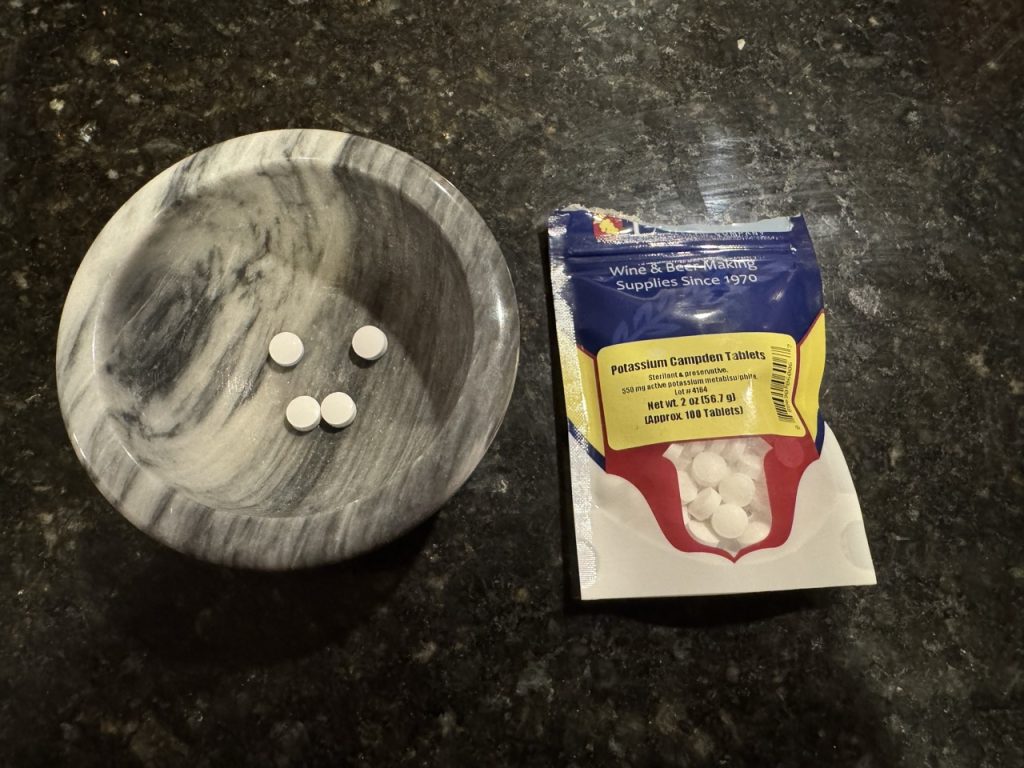
Natural fermentation might be interesting to play around with later on but for now Im focusing on using commercial yeasts to get a stable end product. The instructions said to add 1 tablet per gallon so I used 4. I crushed them up with a mortar and pestle and stirred them into the cider in the 5 gallon bucket. Then you let the cider sit for 24 hours for the campden tablets to do their work.
The next thing I did was to measure the OG or original gravity of the cider. This is basically just measuring how much sugar is in the cider. You do this so you can determine the alcohol content of the cider. The more sugar the yeast eats the more alcohol it produces. If you measure the original gravity and then the finished gravity you can determine with a simple calculation the approximate alcohol content of the cider.
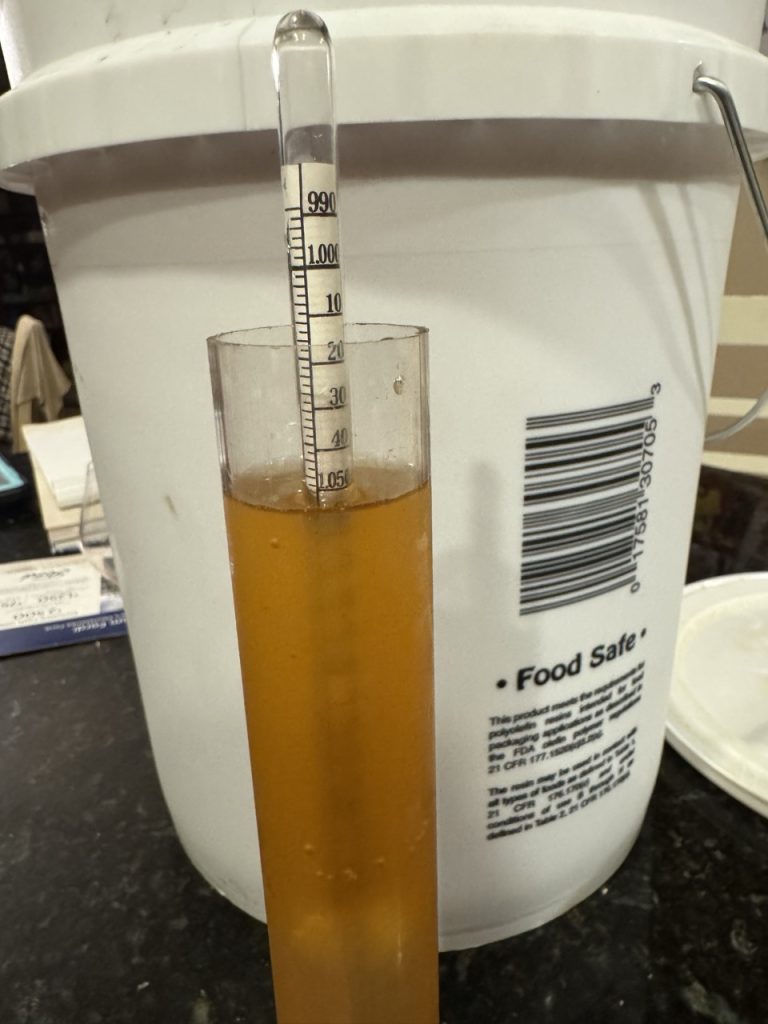
You can see in the above picture that the OG of the cider was 1.05 which based on my understanding is a pretty typical sugar content for cider. Next I split the cider into four 1 gallon buckets and added the yeast…
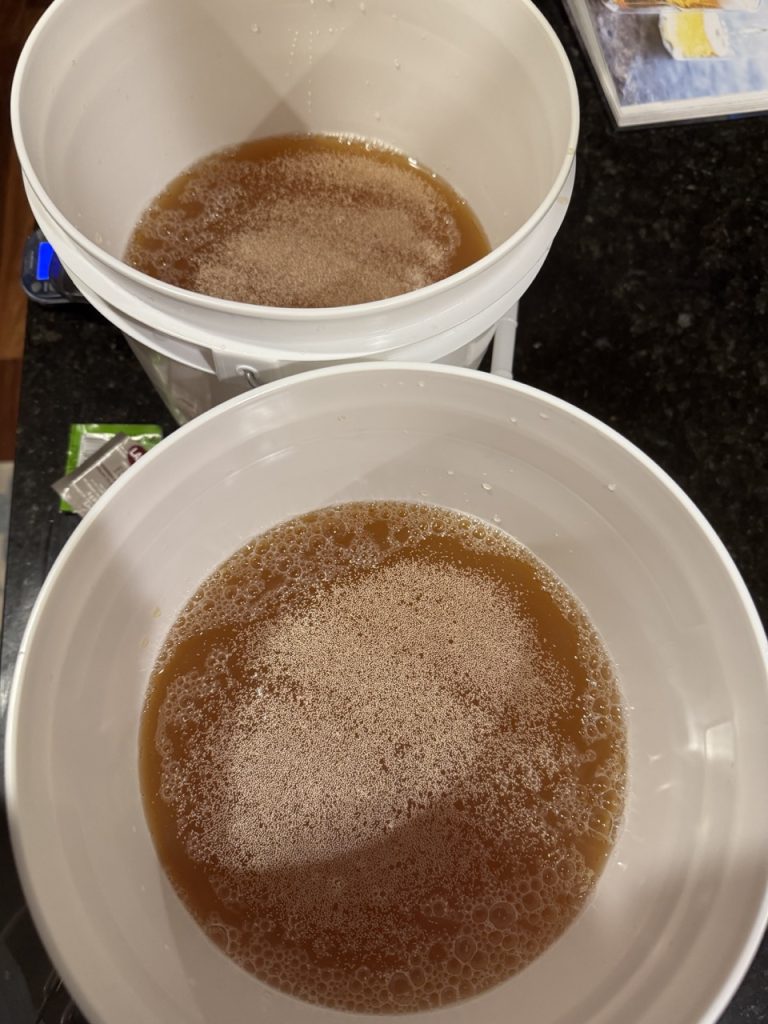
This year I wanted to try two different yeasts. Two of the buckets got EC1118 yeast and two of them got AB-1 SafCider yeast. I bought them at a local brewing store, Beer Meister, which is conveniently located really close to our house. The buckets then got sealed up and had an airlock added to the top…
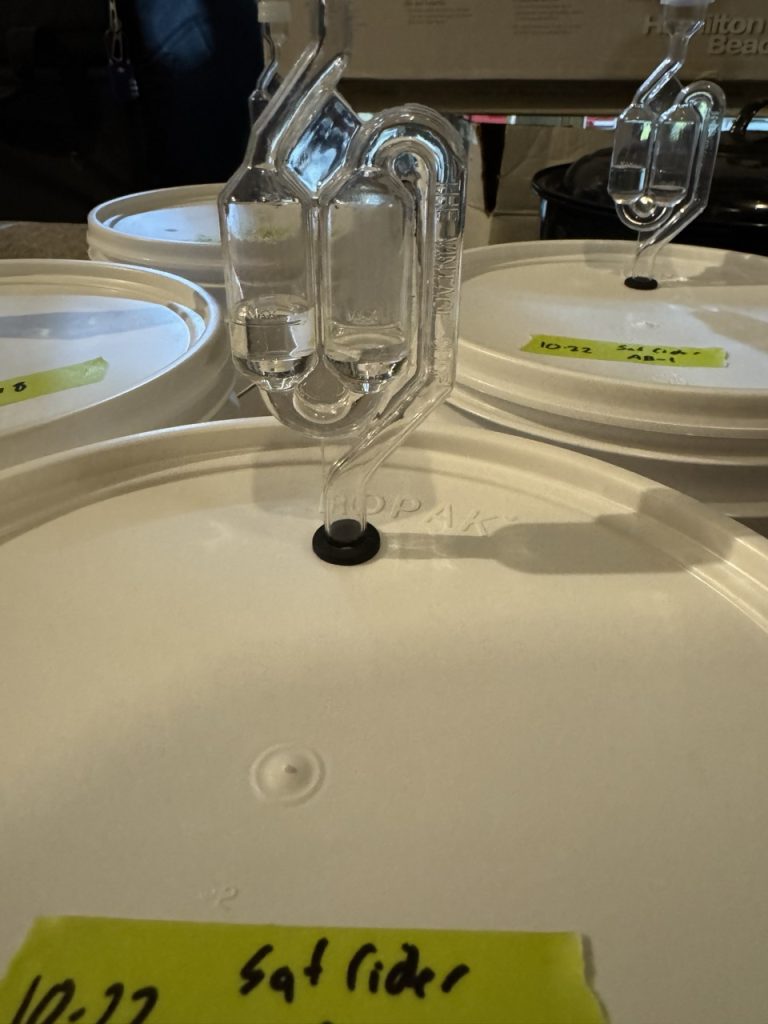
It took a couple of days (possibly because I started with cold cider) but I eventually started seeing bubbles come through the airlocks. The bubbles lasted about a week but I let the cider sit for another week to maker sure primary fermentation was completed. When I opened the lids there was clearly residue from the cider bubbling and fermenting…
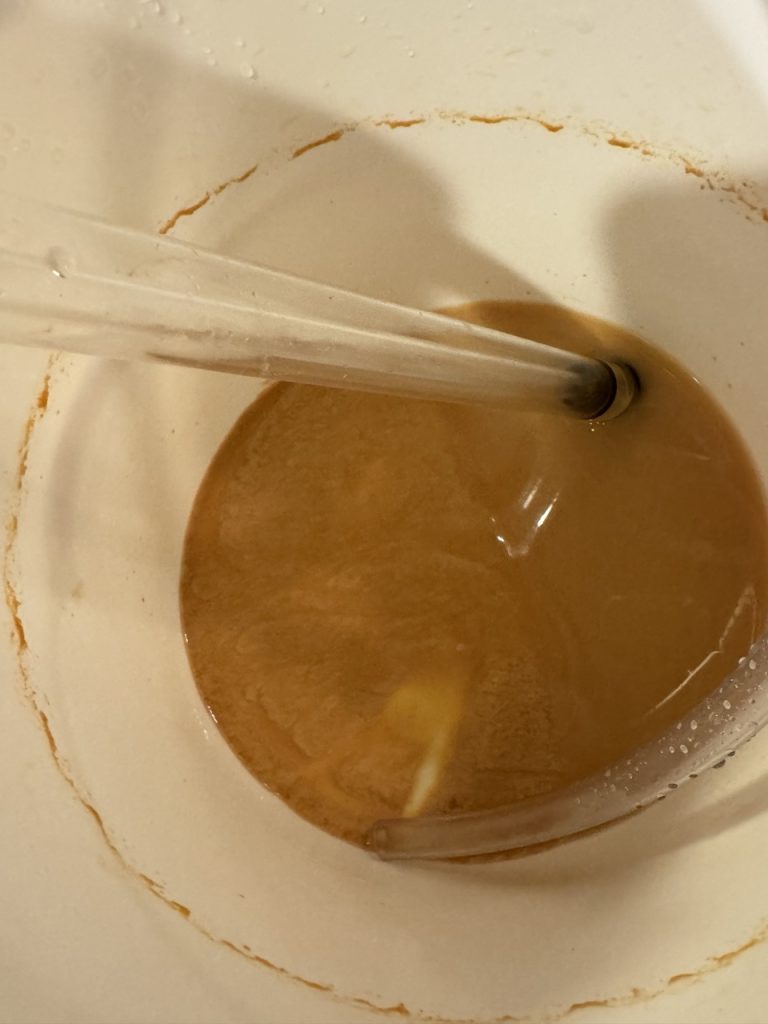
I then used a siphon to “rack” (transfer) the cider out of the bucket while leaving any sediment behind in the bucket. I racked the cider from each bucket into their own glass carboy. As I did this I checkeds the gravity of the cider again…
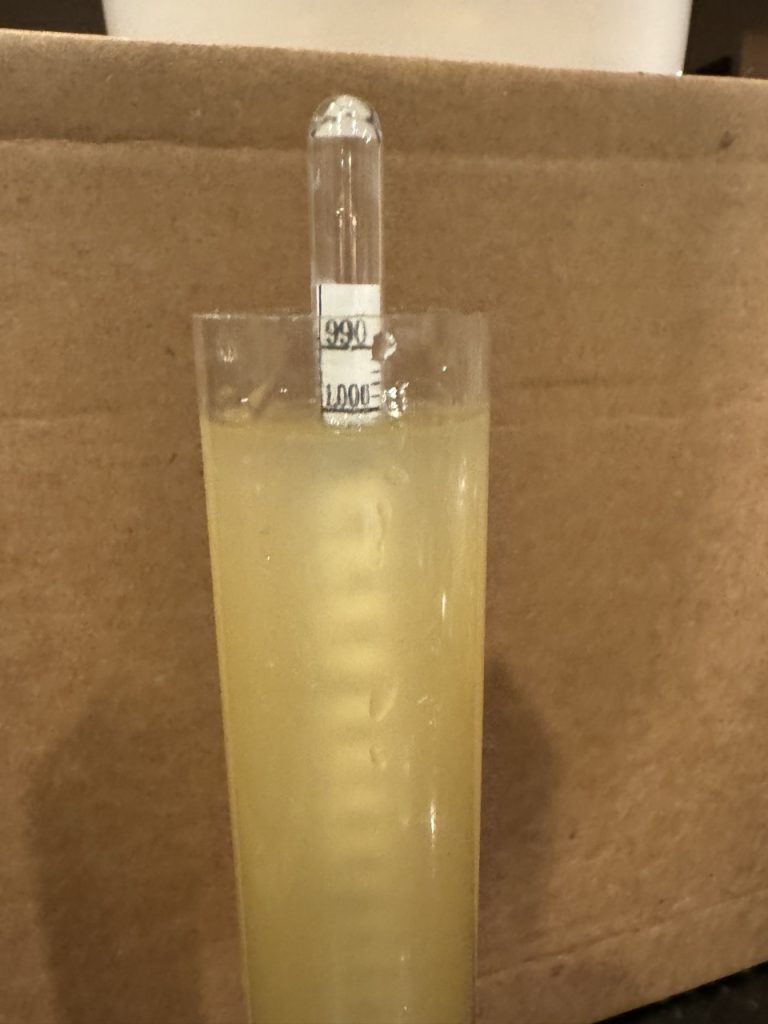
You can see above that Im getting a reading of 1 which means that most if not all of the sugar has been consumed meaning that the yeast had done it’s work! If we went from 1.05 to 1 then our ABV is about 6.5%. You can google the calculation for this – it’s pretty straight forward. I had read that when you transfer the cider to the carboy after primary fermentation you should not leave a lot of head room or air in the bottle. Unfortunately either I didnt measure quite correctly or the carboys were a but larger than a gallon so I had a but of head room at the top of each carboy. I ended up adding pasteurized cider from the grocery store to each carboy to top them off – about 700ml to each gallon. By doing this I introduced more sugar from the fresh cider and the yeast woke up again and I once again saw bubbles in the airlocks. This stopped after about a week and then I continued to let the cider sit for about a month.
Then last night I racked the cider out of each carboy into another bucket. I then added 35 grams of sugar to each gallon of cider to “bottle condition” the cider. Bottle conditioning is giving the cider more sugar in the bottle that it can eat which will give the cider some bubbles. I had read that if you want a medium carbonation that you should add 30-40 grams of sugar to each bottle. Once I had done that – I filled the bottles. I was able to get a little more than 10 bottles per gallon of cider…
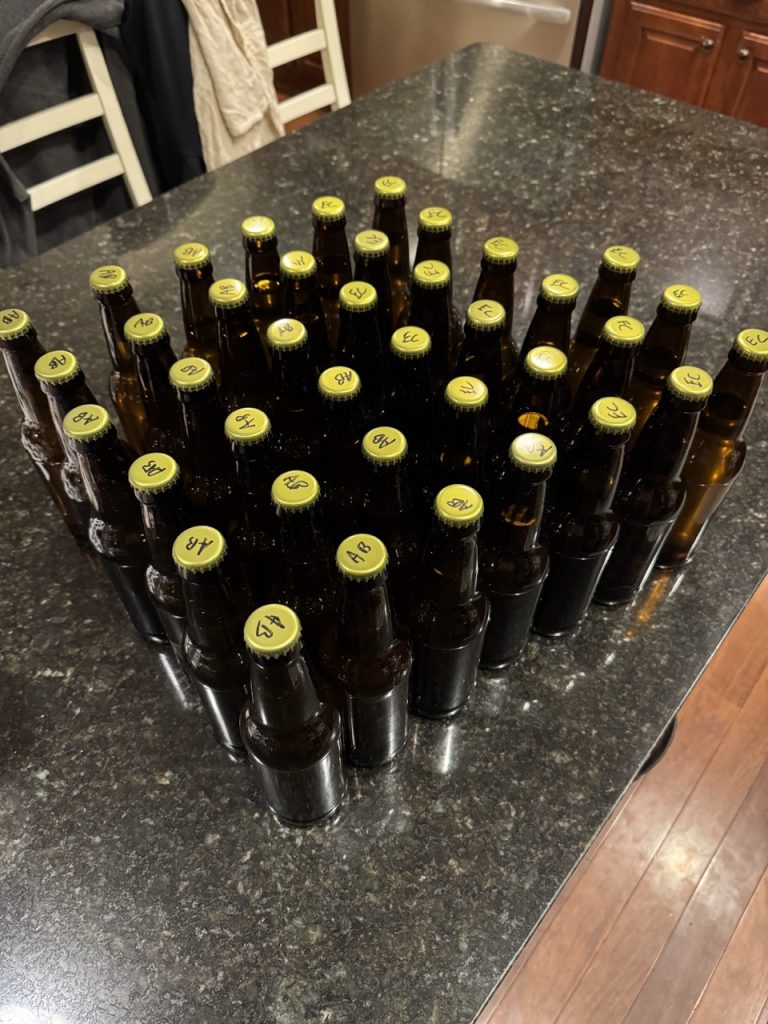
One of the interesting things I learned here was that adding more sugar doesnt make the cider sweeter – it actually just makes it more alcoholic as the yeast will continue to eat the sugar. If you want to add a sweetener to the cider before bottling it has to be non-fermentable. Since I didn’t have any my cider is pretty dry and while it will carbonate (hopefully) with the sugar I added for bottle conditioning it will likely still be dry. That’s OK Im fine adding some sweetener to the cider once I pour it in a glass but with the next batch I’ll probably experiment with sweeteners as well.
All in all it was a pretty interesting experience. I learned a lot!
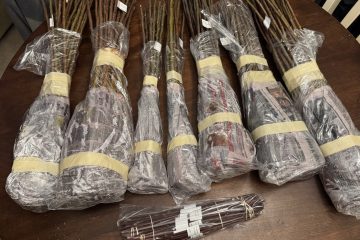
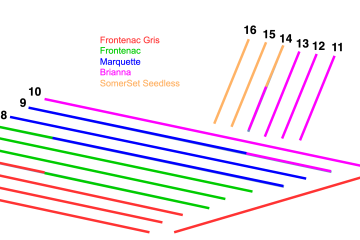
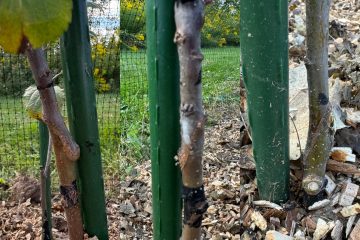
0 Comments